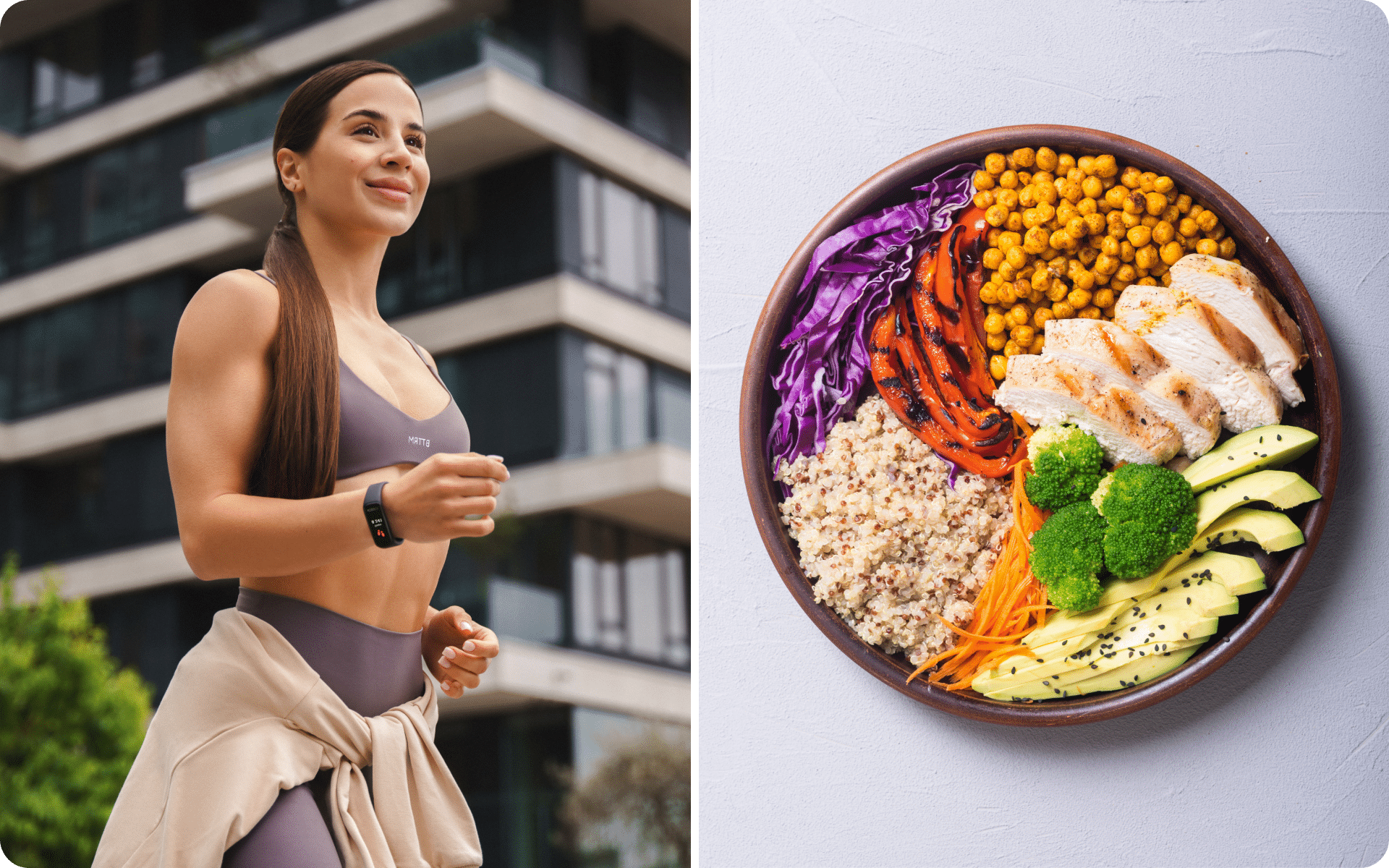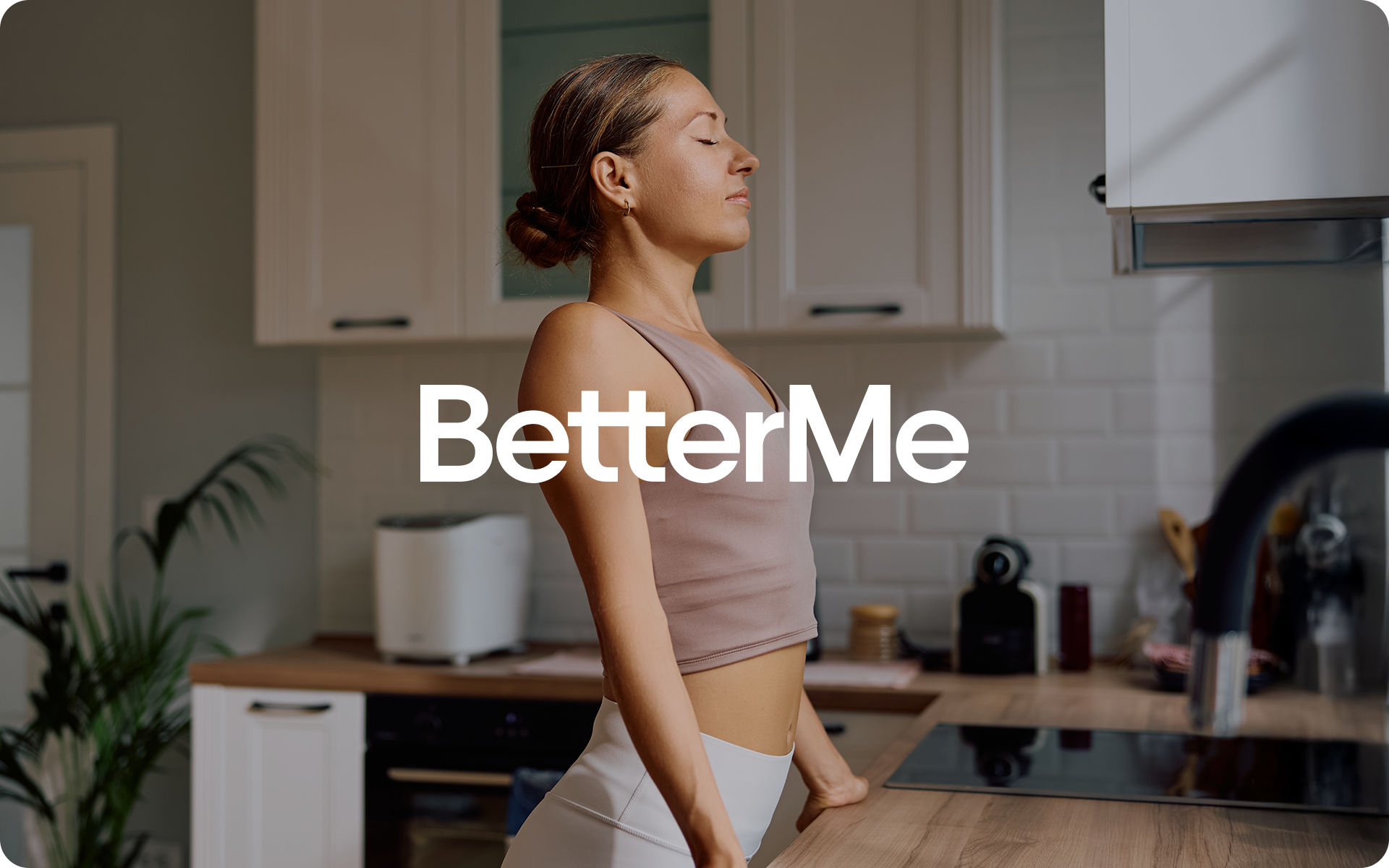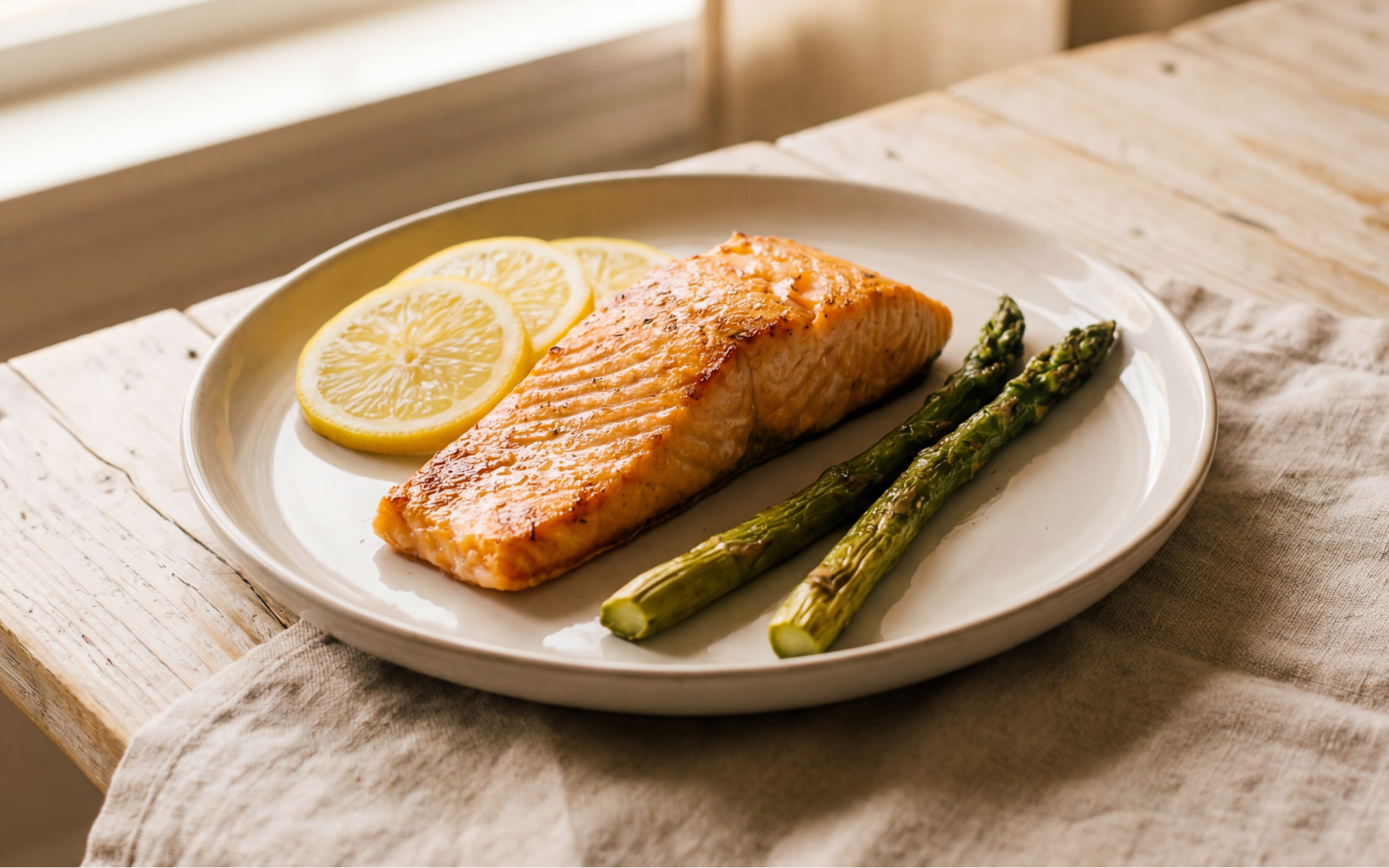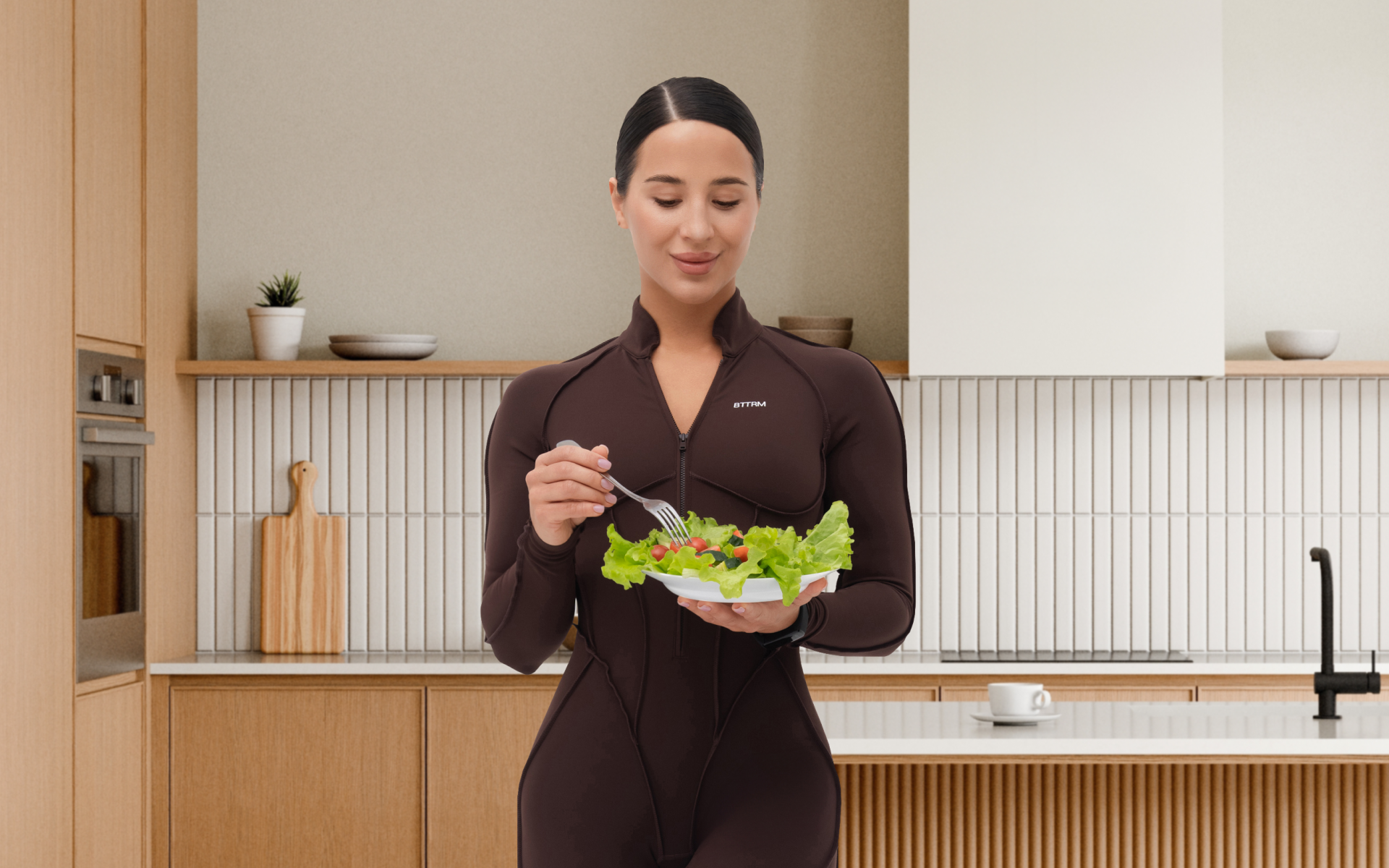How many calories do you need to consume in a day? This is a question many people ask themselves when they’re trying to maintain a healthy weight or lose weight.
The recommended daily calorie intake varies depending on factors such as age, sex, height, weight, and activity level. For the average adult woman, the suggested range is 1,600–2,400 calories per day, while for the average adult man, it’s 2,000–3,000 calories per day (1).
While these are general recommendations for maintaining a healthy weight, some individuals may require more or less than these amounts, depending on their individual needs. In this article, we’ll focus on consuming 1,900 calories a day and whether this is enough for the average adult.
What Is a Healthy Diet?
A healthy diet includes a balanced combination of macronutrients (carbohydrates, proteins, and fats) and micronutrients (vitamins and minerals). Consuming a variety of whole foods such as fruits, vegetables, whole grains, lean protein sources, and healthy fats is essential for maintaining good health (2).
What Does a 1,900-Calorie Diet Look Like?
A 1,900-calorie diet typically consists of three meals and two snacks throughout the day. It’s important to make sure these calories come from a balance of healthy sources such as lean protein, complex carbohydrates, healthy fats, fruits, and vegetables. For example, a sample 1,900-calorie meal plan could look like this:
- Breakfast (400 calories): Two boiled eggs on whole-wheat toast with avocado and a side of fruit.
- Mid-morning snack (200 calories): Greek yogurt with berries and a small handful of nuts.
- Lunch (500 calories): Grilled chicken with quinoa, roasted vegetables, and a side salad with vinaigrette dressing.
- Afternoon snack (200 calories): Hummus and vegetable sticks.
- Dinner (600 calories): Baked salmon with brown rice, steamed broccoli, and a mixed green salad with olive oil and lemon dressing.
This meal plan provides adequate servings of nutrients such as lean protein, complex carbohydrates, healthy fats, vitamins, and minerals to meet the body’s daily needs.
Remember, how you cook and prepare your meals can also impact the overall nutritional value. For example, grilled or baked foods are healthier options compared to fried foods.
Is 1,900 Calories Enough?
The answer to this question depends on several factors. For some individuals, consuming 1,900 calories a day may be enough to maintain their weight or even lose weight if they’re in a calorie deficit. However, for others, it may not be enough.
Here are some factors that can affect whether 1,900 calories a day is enough for you:
- Activity Level: If you have a physically demanding job or regularly engage in vigorous exercise, then your body may require more than 1,900 calories to sustain itself. In this case, consuming 1,900 calories a day may not be enough and could lead to weight loss.
- Age: As you age, your metabolism tends to slow down, meaning that your body burns fewer calories at rest. This means that those who are older may need fewer daily calories compared to younger individuals.
- Gender: Men generally have larger bodies and more muscle mass than women, which requires more caloric energy to maintain. Therefore, men may require more than 1,900 calories a day to sustain themselves.
- Health Conditions: Certain health conditions or medications can affect your body’s ability to burn and utilize calories, which may require you to consume more or less than 1,900 calories per day.
- Goals: If your goal is to lose weight, then consuming 1,900 calories a day may put you in a calorie deficit and help with weight loss, depending on your baseline energy needs. However, if your goal is to gain weight or build muscle, then this amount of calories may not be enough for you.
It’s important to remember that everyone’s body is unique and has different caloric needs. The best way to determine if 1,900 calories a day is enough for you is by consulting a registered dietitian who can assess your individual needs and create a personalized meal plan.
Alternatively, you can use an online calorie calculator to estimate your daily caloric needs based on your age, sex, weight, height, and activity level.
Reasons why BetterMe is a safe bet: a wide range of calorie-blasting workouts, finger-licking recipes, 24/7 support, challenges that’ll keep you on your best game, and that just scratches the surface! Start using our app and watch the magic happen.
Is 1,900 Calories a Good Deficit for a Female?
The concept of a “good” calorie deficit varies based on individual factors such as age, activity level, metabolism, and overall health goals.
For many women, a daily intake of 1,900 calories can represent a calorie deficit if their maintenance calories (the number of calories needed to maintain their current weight) are higher. On average, an adult female may need approximately 2,000-2,200 calories per day to maintain her weight (1), meaning that a 1,900-calorie intake could indeed be a deficit. This will vary by individual.
However, it’s essential to ensure this deficit does not lead to nutritional deficiencies and is in line with personal health objectives. Consulting a healthcare provider or registered dietitian is recommended to determine the appropriate caloric intake for weight loss.
Read more: 7-Day Diet To Lose 10 Pounds: Diving Into Why Rapid Weight Loss Is A Pipe Dream In And Of Itself
Can I Lose Weight on 1,900 Calories a Day?
Yes, it’s possible to lose weight on 1,900 calories a day, especially if your daily caloric needs exceed 1,900 calories, which will create a calorie deficit.
Weight loss occurs when you consume fewer calories than your body needs to maintain its current weight, leading to it burning stored fat for energy (3). The effectiveness of this calorie level for weight loss depends on your basal metabolic rate (BMR) and physical activity level.
Engaging in regular exercise and monitoring dietary quality can enhance weight loss results while ensuring nutritional adequacy.
How Much Weight Will I Lose Eating 1,900 Calories a Day?
The amount of weight you can lose eating 1,900 calories a day depends on several factors, including your starting weight, metabolic rate, and level of physical activity.
A calorie deficit of approximately 500 calories per day is projected to result in a weight loss of approximately 1 pound per week. If 1,900 calories represents a 500-calorie deficit for you, this could be a reasonable expectation.
However, weight loss isn’t always linear and can vary over time due to changes in metabolism, water retention, and muscle gain. It’s important to approach weight loss with realistic goals and patience, focusing on sustainable lifestyle changes rather than rapid results.
Read more: The Catabolic Fasting Zone: What Is It, And Why Does It Matter?
Is 1,900 Calories Enough to Build Muscle?
Building muscle typically requires a calorie surplus, which means consuming more calories than your body expends. The adequacy of 1,900 calories for muscle gain depends on your individual energy needs, which are influenced by factors such as age, sex, weight, metabolism, and activity level.
For many individuals, particularly those who are highly active or have a higher muscle mass, 1,900 calories may not be sufficient to support muscle growth.
It’s important to ensure your diet includes adequate protein and other nutrients that are essential for muscle synthesis (4). To determine the appropriate caloric intake for muscle building, it’s advisable to consult a registered dietitian who can tailor a plan to your specific goals and needs.
If you wish to free yourself from all the extra pounds that have been weighing you down for way too long, start using the BetterMe: Health Coaching app and overhaul your entire life!
Which Foods Should You Include in a 1,900-Calorie-a-Day Diet?
While calorie intake is important, the quality of the food you consume should also be considered. A 1,900-calorie-a-day diet should include nutrient-dense foods that provide essential vitamins, minerals, and macronutrients to support overall health and well-being.
Here are some nutrient-rich food options to consider including in a 1,900-calorie-a-day diet:
- Lean proteins such as chicken breast, fish, tofu, beans, and lentils.
- Whole grains such as brown rice, quinoa, oats, and whole-wheat bread.
- Healthy fats from sources such as avocado, olive oil, nuts, and seeds.
- Fruits and vegetables for their fiber, antioxidants, and various vitamins and minerals.
- Dairy or dairy alternatives for calcium and vitamin D.
- Water for hydration.
It’s important to create a balanced and diverse meal plan that is aligned with your daily caloric goal and meets your body’s individual needs. Consulting a registered dietitian can provide personalized recommendations and support in creating a healthy and sustainable 1,900-calorie-a-day diet.
Get your personalized
meal plan!
Tips for Success on a 1,900-Calorie-a-Day Diet
To successfully maintain a healthy and balanced diet on 1,900 calories per day, here are some tips to consider:
- Plan your meals in advance to ensure you meet your daily calorie goal while getting essential nutrients.
- Choose whole, minimally processed foods whenever possible for their nutritional value and satiety.
- Incorporate regular physical activity into your routine to support overall health and weight management.
- Stay hydrated by drinking water throughout the day and limiting sugary beverages.
- Monitor portion sizes to avoid overeating and stay within your calorie limit.
Remember that sustainable weight loss and overall health involve more than just calorie intake. It’s important to prioritize listening to your body, making mindful food choices, and finding balance in all aspects of life.
No, consuming 1,900 calories daily isn’t considered starving for most individuals. Whether 1,900 calories is sufficient depends on various factors such as age, sex, activity level, and overall health. For some people, particularly women or those with lower energy needs, 1,900 calories can be a maintenance level or even a slight deficit for weight loss. For highly active individuals or those with higher caloric requirements, 1,900 calories may not be enough and could lead to weight loss or nutritional deficiencies. To lose 1 kilogram of body weight, you need to create a calorie deficit of approximately 7,700 calories. This deficit can be achieved over time through a combination of dietary changes and increased physical activity. For example, reducing your daily intake by 500 calories could result in a loss of approximately 0.5 kg per week, meaning that it will take roughly two weeks to lose 1 kg. The number of calories burned by walking 10,000 steps varies based on factors such as weight, walking speed, and terrain. On average, walking 10,000 steps burns approximately 300-500 calories. This estimate assumes a moderate pace and typical conditions. You can use a fitness tracker or app for more personalized estimates based on your specific parameters. A realistic calorie deficit for weight loss is generally between 500 and 1,000 calories per day. This range supports a safe and sustainable weight loss of approximately 0.5 to 1 kilogram per week. The specific deficit that is appropriate varies by individual and factors such as initial weight, metabolism, dietary preferences, and overall health must be considered. Creating a deficit through a combination of reduced calorie intake and increased physical activity is often the most effective. Consulting a healthcare provider or registered dietitian can help tailor a plan to your individual needs and goals.Frequently Asked Questions
Is 1,900 calories starving yourself?
How many calories do I need to burn to lose 1kg?
How many calories will 10,000 steps burn?
What is a realistic calorie deficit?
The Bottom Line
Consuming 1,900 calories per day may be suitable for some individuals, but it’s not a one-size-fits-all recommendation. It’s essential to consider factors such as age, sex health conditions, goals, and activity level when determining the appropriate caloric intake for your body.
Focusing on overall health and balance rather than just calorie consumption can also contribute to long-term success and well-being. Consulting a healthcare professional or registered dietitian can provide personalized guidance and support when creating a sustainable and nutritious diet plan.
DISCLAIMER:
This article is intended for general informational purposes only and does not serve to address individual circumstances. It is not a substitute for professional advice or help and should not be relied on for making any kind of decision-making. Any action taken as a direct or indirect result of the information in this article is entirely at your own risk and is your sole responsibility.
BetterMe, its content staff, and its medical advisors accept no responsibility for inaccuracies, errors, misstatements, inconsistencies, or omissions and specifically disclaim any liability, loss or risk, personal, professional or otherwise, which may be incurred as a consequence, directly or indirectly, of the use and/or application of any content.
You should always seek the advice of your physician or other qualified health provider with any questions you may have regarding a medical condition or your specific situation. Never disregard professional medical advice or delay seeking it because of BetterMe content. If you suspect or think you may have a medical emergency, call your doctor.
SOURCES:
- How Many Calories Should You Eat? (2022,hackensackmeridianhealth.org)
- Defining a Healthy Diet: Evidence for the Role of Contemporary Dietary Patterns in Health and Disease (2022,nih.gov)
- Optimal Diet Strategies for Weight Loss and Weight Loss Maintenance (2021,nih.gov)
- Editorial: Nutritional Strategies to Promote Muscle Mass and Function Across the Health Span












